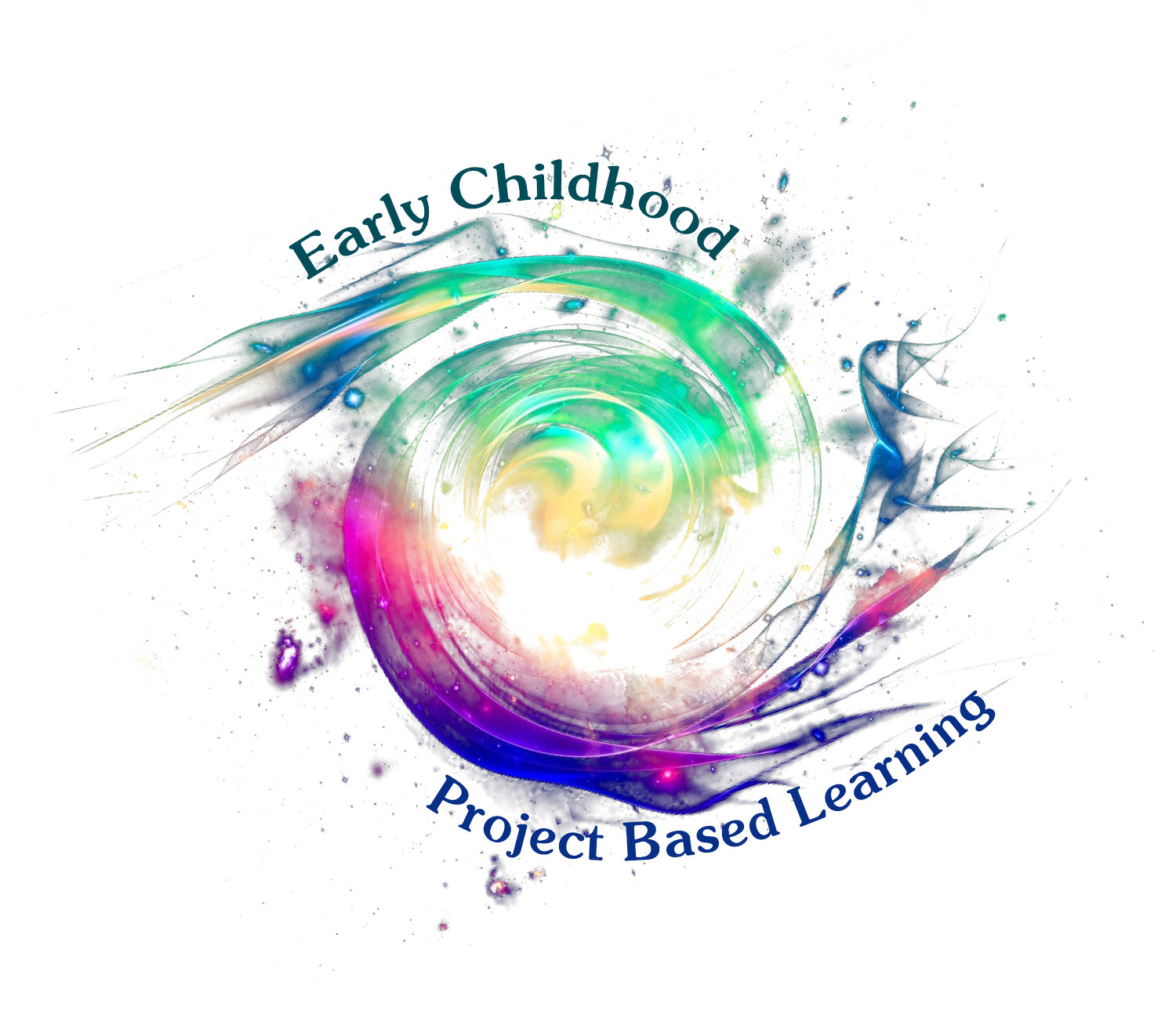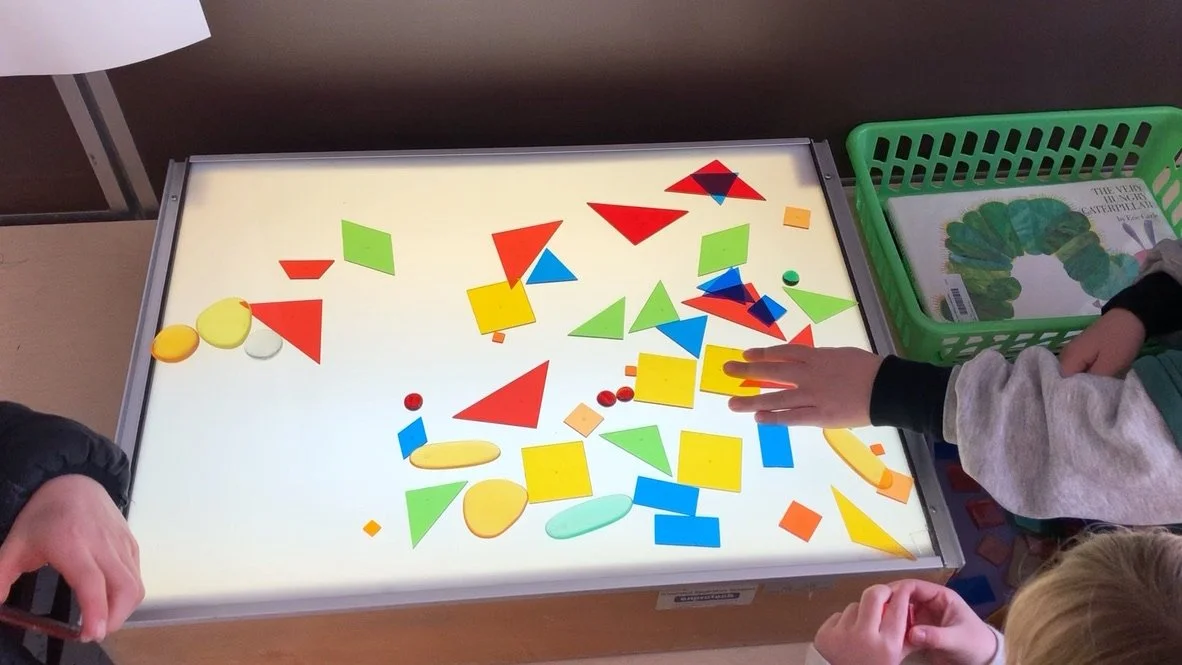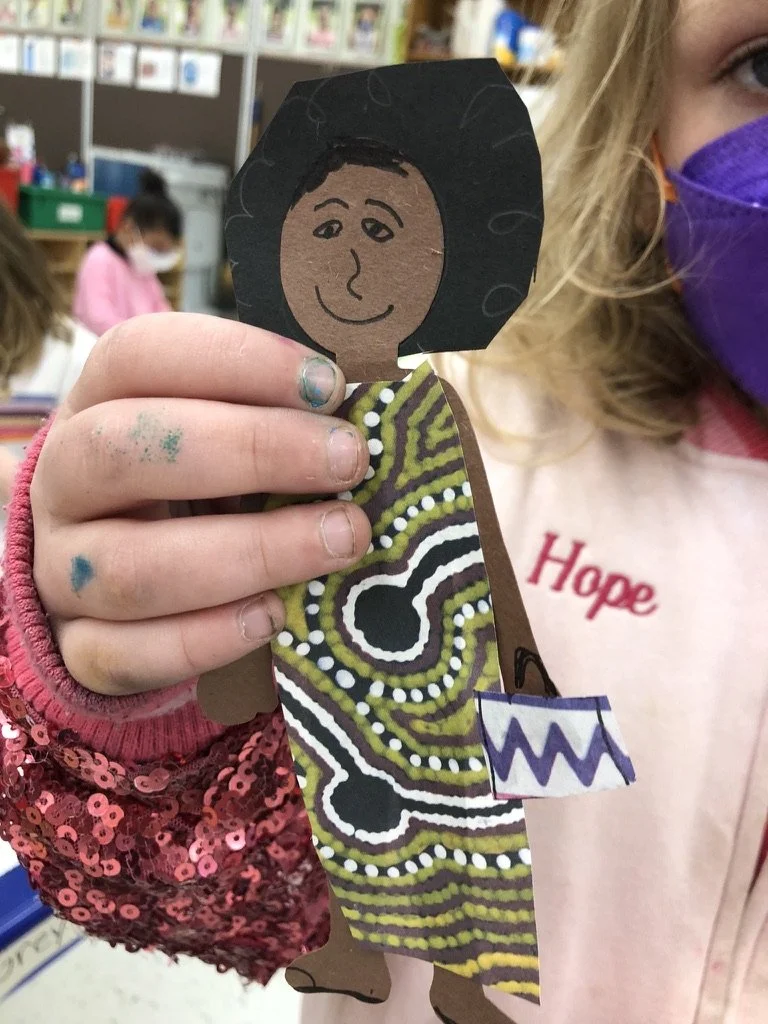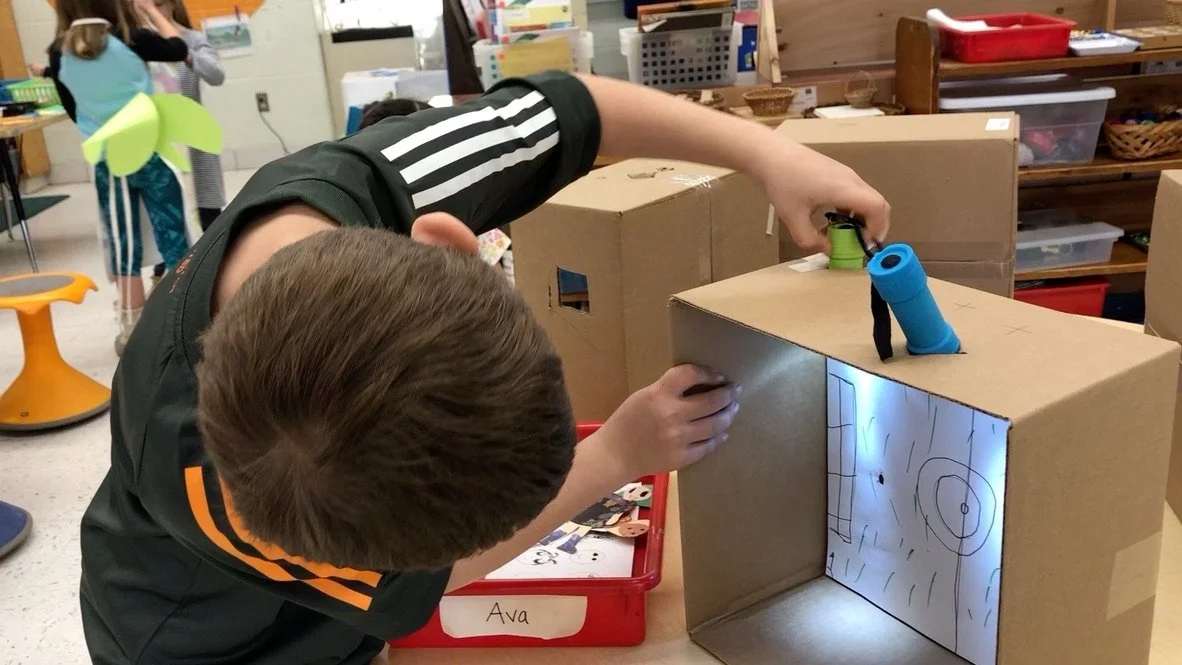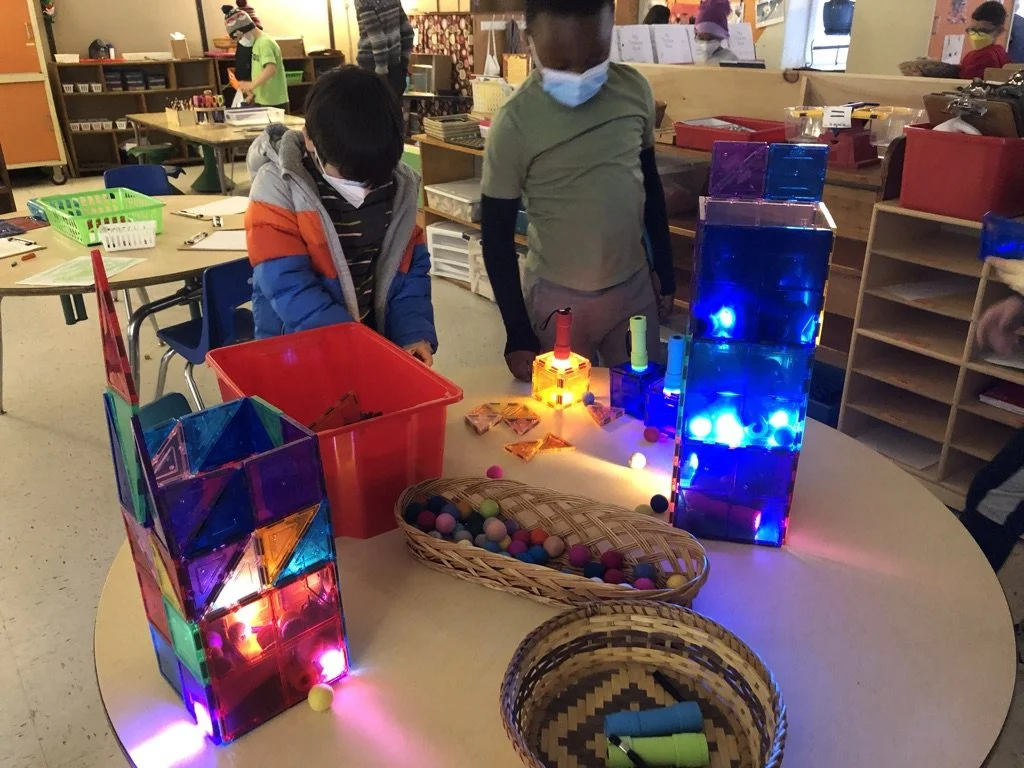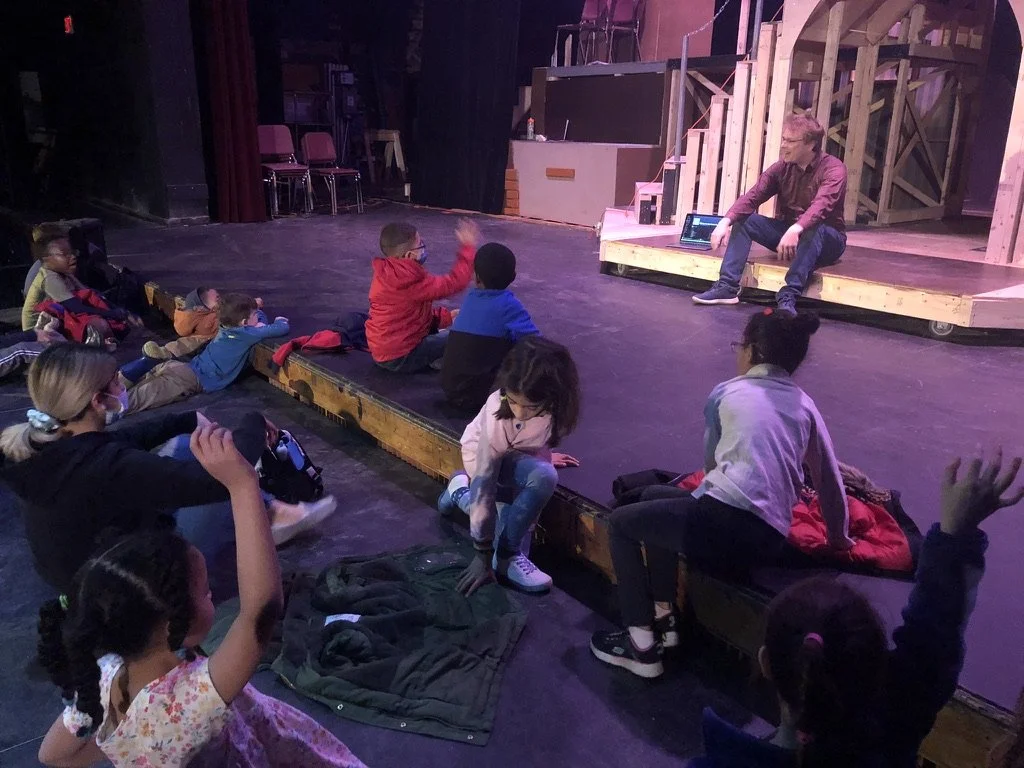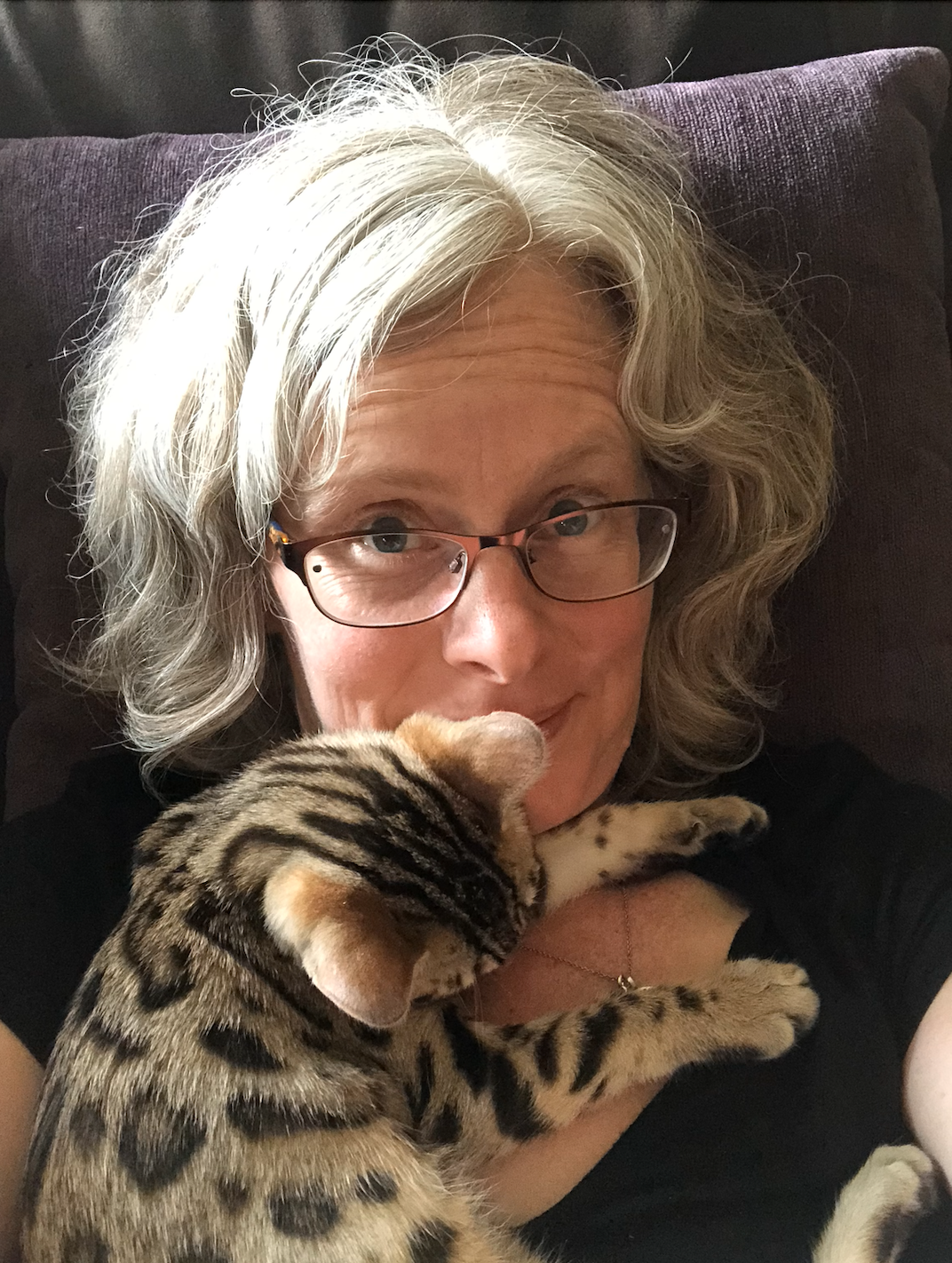Lights, Sound, Action!
Wildwood Elementary School in Amherst Massachusetts has been my teaching home for the past 12 years. I have taught first grade exclusively during my time at Wildwood. Our school is very welcoming and has a strong community. It is diverse, as many students come from families attending local universities. Students’ heritages span six continents and students and staff speak over 20 languages. We use a co-teaching model in our school where there is a general education teacher and special education teacher teaching as a team at each grade level and I teach in one of these inclusive, co-taught classrooms. Our school has been moving towards using Project Based Learning for the past 5 years. This year we received a grant from the Project Based Learning School Leader Network in Massachusetts.
Over the years, I have developed core practices in my classroom that foster social and emotional learning, supportive behavior approaches and use engaging, hands-on curriculum. I teach with the goal of promoting peace in the world and teaching young humans the power of problem solving. I hope to inspire, spark and grow a spirit of wonder and feelings of confidence in each student.
Our Project
Although our current project is still in process, I would like to offer a sneak-peek into what has been happening so far in our classroom. The driving question for this unit is “How can we bring a story to life using light and sound for an audience?” Each student is writing a realistic fiction story, then bringing it to life through a puppet show that they stage and direct themselves. Although each student is writing their own story, they are working in collaborative groups to help create their sets and produce their puppet show. Our puppet shows will be recorded and shown at a culminating, red-carpet event in a few weeks. Each video will have a QR code and there will be a display at our school as well as at the local library where the community can view the videos.
Our Project Beginnings
Students began this unit by breaking apart the driving question into parts and brainstorming thoughts and questions. We watched an animated short to see how the director used light and sound in their story. Students were immediately engaged with the thought of writing their own stories and turning them into their own puppet shows. They had great ideas for what we needed to know such as having experts such as puppeteers and authors come talk to us about how to write and perform a story, practicing how to spell big words, rehearsing their shows a lot before recording them, and learning about realistic fiction stories.
We dove into our unit by looking carefully at a diverse collection of realistic fiction stories. The students worked with partners to read and look at books to notice what made them “realistic.” We continued to use these books throughout the unit to study about the characters, cultures, identities, illustrations, settings, problems and solutions in the books.
Then, the students used stencils to create their own main character. They were provided with a variety of skin tones, hair colors and printed paper to make sure they could represent the characters the way they wanted to. They created likes, dislikes, inside traits and outside traits for their characters. Much of this work overlapped with our Portrait Unit from the beginning of the school year when we discussed similar topics as they focused on their own identities. During this milestone the students had time to critique their classmates' work using a “Stars and Steps” protocol (Stars are what they have done well and steps are ideas for improvement. These are linked to the teaching targets). Then they had a final share of their character puppet with the sixth graders at our school, who also gave the students Stars and Steps.
Once those characters were done, the students decided on where their character would be in the story and started to create the set. Each student began with a 12X12X6 cardboard box with the flaps cut off. They had 12X12 paper to fit into the back of the box. As they did this work, their stories started to take form. Some of them naturally began to tell what would happen to their characters. During this time, we also began to learn about light. We studied shadows, how objects can be translucent, transparent or opaque, how objects reflect light and how directors use light in stories. We had several work times where students rotated through stations to experiment with materials that they could use to light their settings. We watched several video clips from movies and stories that showed different ways to use light. We also watched a video made by a Pixar light director.
Inquiry
This project has naturally created multiple inquiry opportunities. Students returned to some of their Need to Know questions, and teachers also added some questions to make sure that certain standards were addressed. Then students worked in stations to explore light and sound, learning the science through their own observations. They also experimented with ways to create and build their sets, in collaboration with each other in their work groups. They practiced verbalizing and writing their observations and ideas.
Field Work
For field work, we walked to the local high school and met with the theater director. We got to be on the set of their upcoming musical and see the behind-the-scenes work it takes to stage a show. The director had different colors lighting the stage with different music and sounds so students could see the way it made them feel. The students got a tour of the theater and an up-close look at a light board and sound board. We will also have a local puppet artist come to perform and give us some behind-the-scenes tips for performing our puppet shows.
Where we are going…
Next we began writing our stories. The students filled in story maps so they would know their characters, setting, problem and solution. We brainstormed all the different kinds of trouble we saw other characters get into and trouble we have gotten into in our own lives. We posted our ideas on a “Trouble Poster”. This helped students choose what they wanted to happen in their own stories.
We also will be beginning our work on sound next week. Students will study the science behind sound and vibrations. They will ultimately create their own soundboard, which will be a collection of sounds they create that each student can use in their puppet shows. We will watch a video on the art of Foley and students will become Foley artists!
Collaboration
We have collaborated with the art teacher and the technology teacher at our school so the students can create beautiful book covers and practice learning how to use Seesaw to make their own final videos independently.
My own learning
Some of my learning during this unit has been around having the students create checklists with criteria for making their final puppet show. The students looked at videos of puppet shows from the previous year and decided on what criteria made them good puppet shows. We used these findings to create a checklist. I have used their initial “Need to Knows” and their checklist criteria to steer the unit. Giving more voice and choice and having students create their own criteria for their work has taken more time and thought, but has also made the students feel like this is their project and they can steer the project.
We have a lot of work and practice to go, but students love being writers and directors. With our classroom over-run with cardboard and materials, I am trying to keep us focused with a chart tracking each student’s progress. I wonder how we will pull off having everything finished and each student making their own video. It all seems to come together in the end each year, but we shall see.
We hope to make the final exhibition a red-carpet event including some paparazzi and popcorn!
Victoria Munroe has worked with children in a variety of settings for 32 years. She is presently teaching first grade at Wildwood Elementary and enjoys the challenges of developing Project Based Learning Units. She attended the University of Massachusetts to receive both her Bachelor’s and Master’s degrees. For many years she also had her own business as a parent educator and staff trainer for Positive Discipline. She recently received an Excellence in Teaching Award from the Harold Grinspoon Foundation. She lives with her family including her son, husband and bengal cat in Northampton, Massachusetts.
